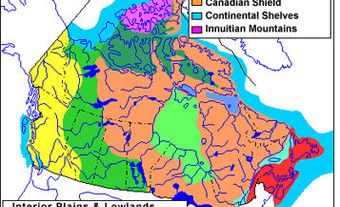
Submersible
A submersible is a small vehicle designed to operate under water, to carry out such tasks as research, equipment recovery and seabed surveys. A submersible must be supported by a surface vessel or platform; hence, it differs from a submarine, which is an independent, self-supporting vessel. Manned submersibles are used worldwide. Several classes have been designed and manufactured in Canada, eg, Pisces, a one-atmosphere vehicle, and SDL, a lock-out vehicle, both operated by branches of the Canadian government. Manned submersibles have depth capabilities exceeding 6000 m, but generally operate at depths less than 2200 m. Remotely operated vehicles (ROVs) are operational worldwide and are manufactured by several nations, Canada being a major contributor. ROVs designed and manufactured in Canada include the Dart, Trec and Trov classes of free-swimming vehicles.The Canadian government took delivery of a HYSUB 5000 ROV in 1987. Designed and manufactured by International Submarine Engineering (ISE) of Port Moody, BC, the HYSUB is an electrohydraulic submersible remotely operated vehicle, operating with 6 to 250 hp. Several HYSUBs have been designed to operate in depths of 5000 m. They are generally equipped with 2 magnum manipulators, and may be "live-boated" - operated without a cage - or cage deployed. Their applications include salvage operations, laying telecommunications cables, and conducting pipeline inspections, mine countermeasures and oceanographic research.
Manned submersibles have been developed for applications as varied as national defence and tourism. The SDL-1 (submersible diver lockout) was developed for Canada's navy by International Hydrodynamics Corporation of Vancouver, BC, in 1971 and completely overhauled by ISE Research in 1983-84 and again in 1987-88, 1991-92 and 1995-96. The SDL-1 can carry a crew of 2, plus 3 divers. In 1985, ISE designed and built 4 battery-powered, computer-controlled 22-passenger submersibles for West Edmonton Mall, in Edmonton, Alta.
The Institute of Ocean Science uses the ISE-built ROPOS, a remotely operated platform for ocean science. It can operate in deep water, to a depth of 5000 m. ROPOS is a component of a cage/vehicle system, with full operational capability. When configured as a cage/vehicle system, both components are deployed together to the dive target depth, where the vehicle operates independently of the cage on up to 300 m of flying tether. In deep-water mode, ROPOS is a 30 hp vehicle with an additional 10 hp available to the cage systems.
In shallow water, the vehicle liveboats. In this configuration, it routinely operates to 350 m depth as a 40 hp vehicle. The vehicle is equipped with 2 video cameras, 2 manipulators, sonar, a variety of custom sampling tools and several digital data channels. The vehicle and cage are normally navigated with an acoustic long baseline tracking system, calibrated with a differential GPS (global positioning system).

 Share on Facebook
Share on Facebook Share on X
Share on X Share by Email
Share by Email Share on Google Classroom
Share on Google Classroom


